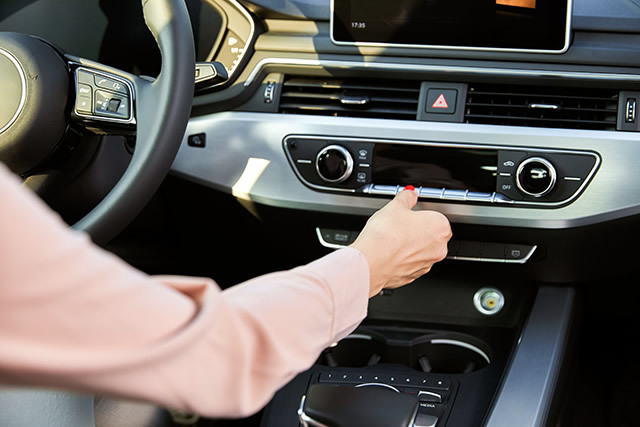How often should the car refrigerant be replaced?
Release Time:
2023-06-25
1. How often should the car refrigerant be replaced?
Automobile air conditioners can provide good cooling effect for the compartment. The cooling effect mainly depends on the internal refrigerant. Usually the refrigerant is not consumed, but if the refrigerant leaks, it needs to be re-added with fluoride. Then the vehicle refrigerant How often do you add it?
Generally, the fluorine addition period of automobile air conditioners is relatively long, and the ordinary automobile air conditioners can realize fluorine addition for five years, and the cooling effect is relatively good. If the cycle of adding fluoride to the air conditioner of some cars with poor quality is relatively short, generally within two years, it is necessary to go to a professional car repair shop to add fluoride to the air conditioner, while the cycle of adding fluoride to the air conditioner of some cars with good performance is longer, which can achieve After eight years, add fluoride to the air conditioner.
You can judge whether your car needs to add fluoride by observing the air bubbles in the glass hole when the air conditioner is running normally. If there are continuous bubbles in the glass hole, it means that the amount of fluorine in the air conditioner is insufficient and needs to be replenished in time. If there are no air bubbles in the glass hole, it means A certain amount of fluorine needs to be discharged. At this time, the fluorine in the air conditioner is excessive, and transient bubbles appear in the glass pores, which means that the fluorine content of the air conditioner is in the normal range at this time.

2. What is the appropriate pressure for adding fluoride to the car air conditioner?
Generally, the pressure of adding fluoride to automobile air conditioners is 150-250Kpa for low pressure and 1300-1500kpa for high pressure. After the fluorine filling is completed, close the low-pressure manual valve on the manifold pressure gauge, close the injection valve installed on the refrigerant tank, stop the engine, and remove the manifold pressure gauge from the compressor. , so as not to leak too much refrigerant.
3. What are the methods of adding refrigerant to the car?
There are two ways to add refrigerant to the car: you can add from the high-pressure end or from the low-pressure end. The two methods are very different due to the different states of refrigerant filling. The high-pressure end is filled with liquid refrigerant, which is suitable for filling after the first leak detection and vacuuming. Note that this method needs to be done when the engine is stopped, and the refrigerant tank needs to be turned upside down; the other is low-pressure The end is filled with gas, and the filling speed is slow, which is usually used to supplement the refrigerant.
Four, how to add car snow
1. High pressure end charging method
The high-pressure end charging is to add liquid refrigerant to the air-conditioning and refrigeration system through the high-pressure side of the pressure gauge. The operation method is:
(1) Connect the filling pipeline. Connect the combined high and low pressure side joints to the high and low pressure maintenance valves of the compressor respectively, and connect the maintenance central joint to the refrigerant tank.
(2) Open the refrigerant tank valve handle.
(3) Loosen the joint nut of the intermediate hose of the combined pressure gauge until the sound of refrigerant leakage is heard, drive out the air in the hose, and then tighten the joint nut.
(4) Open the high-pressure valve of the combined pressure gauge, turn the refrigerant tank upside down, and let the refrigerant flow into the pipeline (the sound of liquid flow can be heard), until the refrigerant in the system reaches the specified amount. For refrigerant R134a, the pressure of the high pressure gauge is about 1.55~1.85MPa, and for refrigerant R12, the pressure of the high pressure gauge is about 0.2MPa lower.
(5) Close the valve handle of the refrigerant tank and the high-pressure valve of the pressure gauge, remove the combined pressure gauge and refrigerant tank, and complete the charging of the refrigerant.
2. Low pressure side charging method
(1)) Low-pressure end charging is to replenish gaseous refrigerant to the air-conditioning and refrigeration system through the low-pressure side of the pressure gauge. The operation method is:
(2) Connect the filling pipeline, the connection method is the same as the "high pressure side filling method".
(3) Put the refrigerant tank upright, and open the valve handle of the refrigerant tank.
(4) Slightly loosen the joint nut of the hose joint in the middle of the combined pressure gauge until the sound of refrigerant leakage is heard, drive out the air in the hose, and then tighten the joint nut.
(5) Open the low-pressure valve of the combination pressure gauge, and the gaseous refrigerant starts to charge.
(6) Start the engine at a speed of 1500~200Or/min. Start the air-conditioning system, set the temperature control switch to the coldest position, and the fan switch to the high-speed position, so that the refrigerant is filled to the specified amount. During the inflation process, the pressure of the low pressure gauge shall not exceed 0.55MPa.
(7) Close the valve handle of the refrigerant tank and observe the pressure of the combined pressure gauge. For refrigerant R134a, the high pressure gauge is 1.55~1.85MPa, and the low pressure gauge is 0.16~0.22MPa; for refrigerant R12, the high pressure gauge is 1.35~1.65MPa , The low pressure gauge is 0.14~0.20MPa.
(8) Turn off the engine, close the high-pressure and low-pressure valves, remove the combined pressure gauge and refrigerant tank, and complete the charging of the automobile air-conditioning refrigerant.
Recommended News
How Car Air Conditioning Works
2023-06-25
Share To
Zengcheng Dushi Auto Air Conditioner Manufacturing Co., Ltd
Service Hotline:
Production base:
ADD:Xiya Society, Xiayuan Village, Ningxi, Xintang Town, Zengcheng, Guangzhou
Web:
Copyright © Zengcheng Dushi Auto Air Conditioner Manufacturing Co., Ltd

